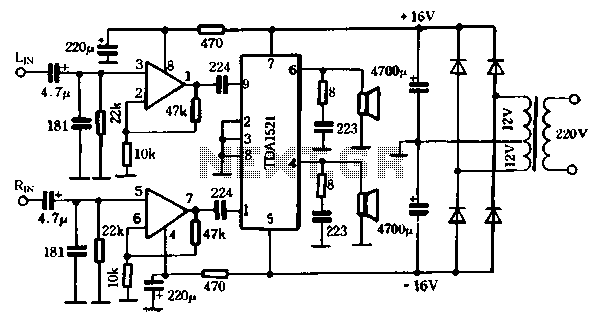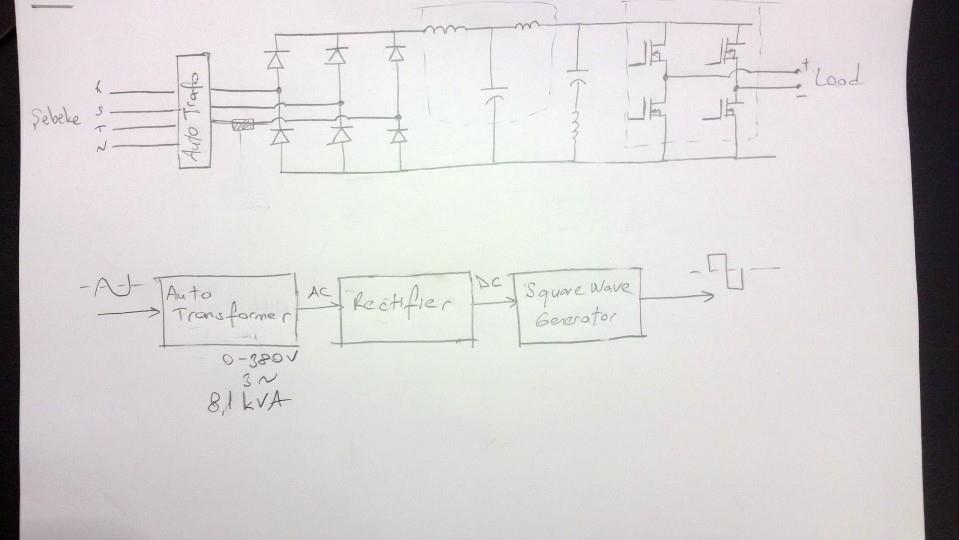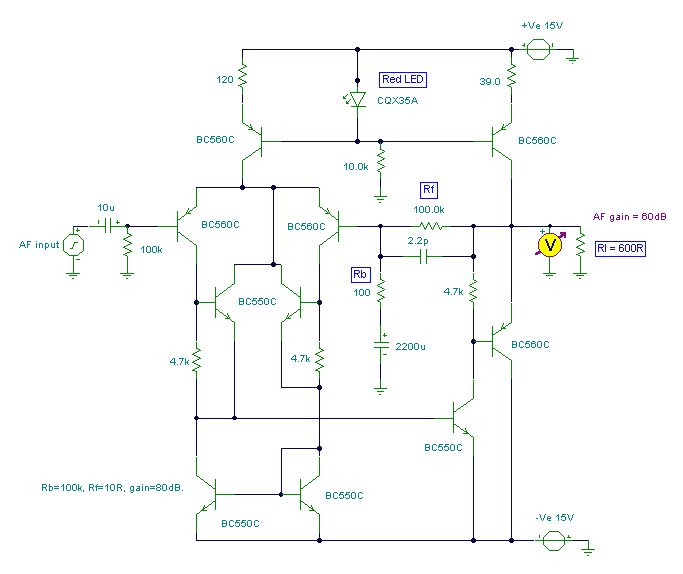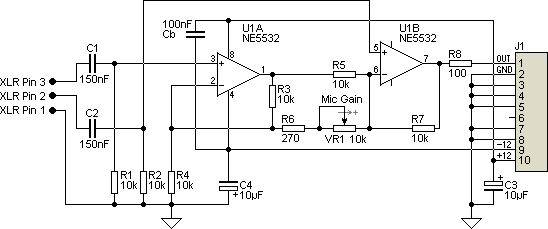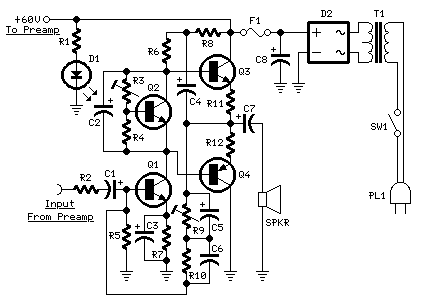
100W Transmitter RF Power Amplifier 2SC2782

This is a 6-meter band transmitter RF power amplifier designed for 50 MHz operation, delivering an output power of 100 watts. It is intended for use with the FT-736R transceiver and is driven by a 10-watt signal for 6-meter SSB DX communications. The construction information is sourced from Japan CQ Magazine. The amplifier utilizes a Toshiba RF bipolar power transistor. For optimal performance, it is recommended to use a double-sided PCB to enhance grounding and current transfer. The transmitter power can be adjusted to a maximum of 120 watts.
The 6-meter band RF power amplifier circuit is designed to amplify signals in the VHF range, specifically at 50 MHz, which is commonly used for amateur radio communications. The amplifier operates on a class of operation that typically favors efficiency and linearity, which is crucial for SSB (Single Sideband) transmission.
The choice of a Toshiba RF bipolar power transistor is significant due to its reliability and performance characteristics in RF applications. Bipolar transistors provide high power gain and are capable of handling the necessary output power levels. When designing the circuit, careful consideration should be given to the transistor's biasing to ensure optimal performance and prevent thermal runaway.
Utilizing a double-sided PCB layout is advantageous for this amplifier design. This configuration allows for better grounding techniques, which is critical in RF applications to minimize noise and interference. The double-sided layout also facilitates the routing of power and ground planes, improving current transfer and thermal management.
The amplifier's output power can be tuned to reach up to 120 watts, providing flexibility for various operational conditions. This tuning capability is typically achieved through adjustable components in the circuit, such as variable resistors or capacitors, enabling the user to optimize performance based on specific requirements or conditions.
In conclusion, this 6-meter band RF power amplifier is a robust design suitable for amateur radio enthusiasts looking to enhance their signal strength for SSB communications. Proper construction techniques, including the use of a double-sided PCB and careful component selection, are essential for achieving the desired performance levels.This is a 6m band transmitter RF power amplifier (50 MHz) with 100W output. It used with my FT-736R and drive from 10W for the 6m SSB DX. The Building information comes from Japan CQ Magazine. The Toshiba RF bipolar power transistor is used in it. If you want to construct this rf amplifier, it`s the better way if the double side PCB use for increase the grounding and current transfer. The TX power can be tune to 120W 🔗 External reference
The 6-meter band RF power amplifier circuit is designed to amplify signals in the VHF range, specifically at 50 MHz, which is commonly used for amateur radio communications. The amplifier operates on a class of operation that typically favors efficiency and linearity, which is crucial for SSB (Single Sideband) transmission.
The choice of a Toshiba RF bipolar power transistor is significant due to its reliability and performance characteristics in RF applications. Bipolar transistors provide high power gain and are capable of handling the necessary output power levels. When designing the circuit, careful consideration should be given to the transistor's biasing to ensure optimal performance and prevent thermal runaway.
Utilizing a double-sided PCB layout is advantageous for this amplifier design. This configuration allows for better grounding techniques, which is critical in RF applications to minimize noise and interference. The double-sided layout also facilitates the routing of power and ground planes, improving current transfer and thermal management.
The amplifier's output power can be tuned to reach up to 120 watts, providing flexibility for various operational conditions. This tuning capability is typically achieved through adjustable components in the circuit, such as variable resistors or capacitors, enabling the user to optimize performance based on specific requirements or conditions.
In conclusion, this 6-meter band RF power amplifier is a robust design suitable for amateur radio enthusiasts looking to enhance their signal strength for SSB communications. Proper construction techniques, including the use of a double-sided PCB and careful component selection, are essential for achieving the desired performance levels.This is a 6m band transmitter RF power amplifier (50 MHz) with 100W output. It used with my FT-736R and drive from 10W for the 6m SSB DX. The Building information comes from Japan CQ Magazine. The Toshiba RF bipolar power transistor is used in it. If you want to construct this rf amplifier, it`s the better way if the double side PCB use for increase the grounding and current transfer. The TX power can be tune to 120W 🔗 External reference
Warning: include(partials/cookie-banner.php): Failed to open stream: Permission denied in /var/www/html/nextgr/view-circuit.php on line 713
Warning: include(): Failed opening 'partials/cookie-banner.php' for inclusion (include_path='.:/usr/share/php') in /var/www/html/nextgr/view-circuit.php on line 713

